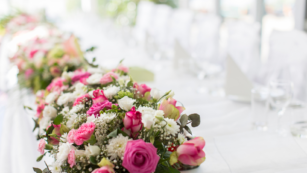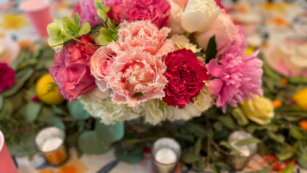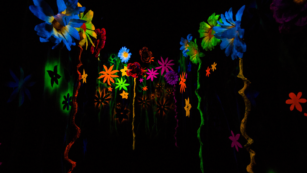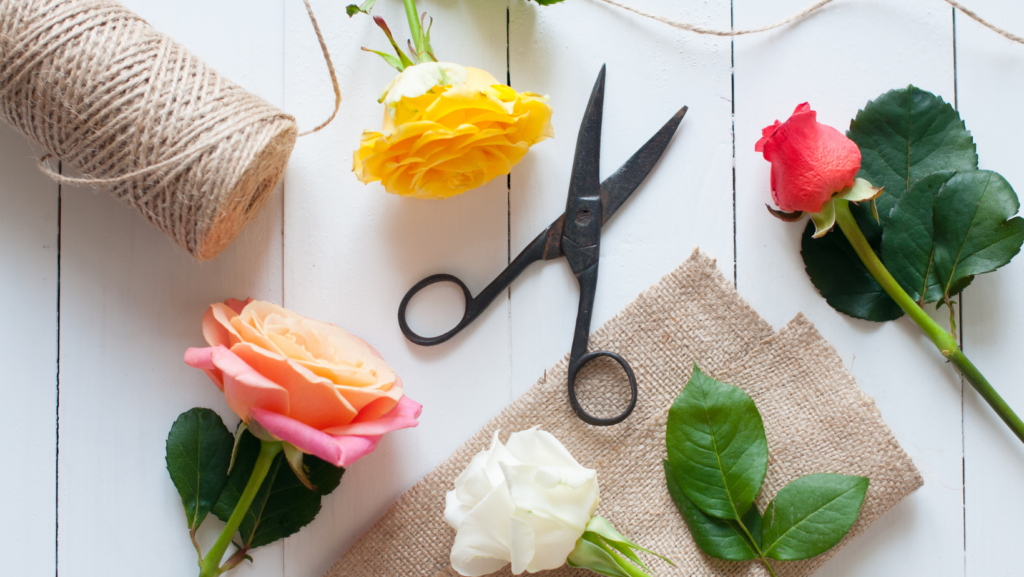Floral design is an art form, a dance of colors, textures, and shapes that can transform an ordinary space into a breathtaking scene. But what’s the secret to creating those stunning arrangements we all admire? The answer lies in understanding basic arrangement forms.
Whether you’re a hobbyist or a professional, mastering these forms is a must. It’s the foundation upon which all successful floral designs are built. From the simplest bouquet to the most elaborate centerpiece, these fundamental forms guide every creative decision.
Stay with us as we delve into the world of floral design, exploring its basic arrangement forms and their significance. We’ll break down these forms, demystify their complexities, and help you harness their power to create your own floral masterpieces.
Basic Arrangement Forms in Floral Designing
 Diving deeper into understanding the core principles of floral design, consider the indispensable role of essential design elements and the compelling influence of color and texture. In the field of floral design, it’s impossible to ignore the cornerstone role played by elements of design. These fundamental components include lines, shapes, spaces, textures, and colors form. In a floral composition, they bear a relationship with one another, dynamically influencing the eventual presentation. A floral arrangement, for instance, employs horizontal, vertical, and curved lines to configure the shape, forms, and direction of the creation. Shapes, rounding off as the second key element, draw attention to specific flowers or greenery within the arrangement, simultaneously contributing to the overall design balance. Spaces, on one hand, act as the ‘pause’ between elements, giving viewers a break as they navigate the design, and textures, on the other hand, add depth and dimension. Finally, colors set the mood and underscore the aesthetic appeal. To cultivate proficiency in floral design practice involves a careful study and application of these elements.
Diving deeper into understanding the core principles of floral design, consider the indispensable role of essential design elements and the compelling influence of color and texture. In the field of floral design, it’s impossible to ignore the cornerstone role played by elements of design. These fundamental components include lines, shapes, spaces, textures, and colors form. In a floral composition, they bear a relationship with one another, dynamically influencing the eventual presentation. A floral arrangement, for instance, employs horizontal, vertical, and curved lines to configure the shape, forms, and direction of the creation. Shapes, rounding off as the second key element, draw attention to specific flowers or greenery within the arrangement, simultaneously contributing to the overall design balance. Spaces, on one hand, act as the ‘pause’ between elements, giving viewers a break as they navigate the design, and textures, on the other hand, add depth and dimension. Finally, colors set the mood and underscore the aesthetic appeal. To cultivate proficiency in floral design practice involves a careful study and application of these elements.
Popular Floral Arrangement Forms
 Floral design gets marked by various arrangement forms. Each form serves a distinct purpose and harbors its unique aesthetic. This section outlines three popular forms, namely the vertical, the horizontal, and the triangular arrangements. Vertical arrangements incorporate one primary vertical line. Along this line, floral designers arrange flowers and foliage. As a result, these arrangements tend to attain great heights, illustrating a sense of elegance and drama. They work perfectly in spaces such as tall tables or high countertops. For instance, a vertical arrangement comprising of roses, lilies, and tall leafy greens captures the eyes and generates a splendid aesthetic.
Floral design gets marked by various arrangement forms. Each form serves a distinct purpose and harbors its unique aesthetic. This section outlines three popular forms, namely the vertical, the horizontal, and the triangular arrangements. Vertical arrangements incorporate one primary vertical line. Along this line, floral designers arrange flowers and foliage. As a result, these arrangements tend to attain great heights, illustrating a sense of elegance and drama. They work perfectly in spaces such as tall tables or high countertops. For instance, a vertical arrangement comprising of roses, lilies, and tall leafy greens captures the eyes and generates a splendid aesthetic.
The Horizontal Arrangement
Horizontal arrangements, unlike vertical configurations, extend sideways. They usually incorporate a low, wide container with an array of flowers and foliage stretching across. Designers often use such arrangements as centerpieces for low tables or as attractive displays at receptions. Consider a horizontal arrangement filled with sunflowers, baby breath, and blue delphinium. It offers a vivid and expansive landscape of colors, enhancing the overall ambiance.
Techniques for Creating Stunning Arrangements
 Building on the fundamental concepts of floral design, and the variety of arrangement forms, it’s now time to delve into practical techniques for producing remarkable floral presentations. The container chosen directly influences the final look of the arrangement. Glass vases, for instance, showcase a contemporary aesthetic, while rustic baskets lend a vintage charm. Consider the form of the arrangement, the occasion, and the overall interior design when picking a container. For vertical arrangements, tall cylindrical vases or pedestal urns work best, given their ability to support height. Horizontal arrangements tend toward lower, elongated containers that match their sprawling disposition. Lastly, triangular arrangements often couple well with round containers, as they enhance the three-point structure. Equally important is the container’s functionality. It must accommodate the stems comfortably, providing ample space and water reservoirs to guarantee the longevity of blooms.
Building on the fundamental concepts of floral design, and the variety of arrangement forms, it’s now time to delve into practical techniques for producing remarkable floral presentations. The container chosen directly influences the final look of the arrangement. Glass vases, for instance, showcase a contemporary aesthetic, while rustic baskets lend a vintage charm. Consider the form of the arrangement, the occasion, and the overall interior design when picking a container. For vertical arrangements, tall cylindrical vases or pedestal urns work best, given their ability to support height. Horizontal arrangements tend toward lower, elongated containers that match their sprawling disposition. Lastly, triangular arrangements often couple well with round containers, as they enhance the three-point structure. Equally important is the container’s functionality. It must accommodate the stems comfortably, providing ample space and water reservoirs to guarantee the longevity of blooms.
Ensuring freshness in floral arrangements extends beyond just watering. First up, selecting fresh and healthy flowers is paramount. Look out for vibrant petals, sturdy stems, and traces of its natural green hue. Secondly, cut the stems at a 45-degree angle under running water. This method promotes water uptake, ensuring the flowers remain fully hydrated.

